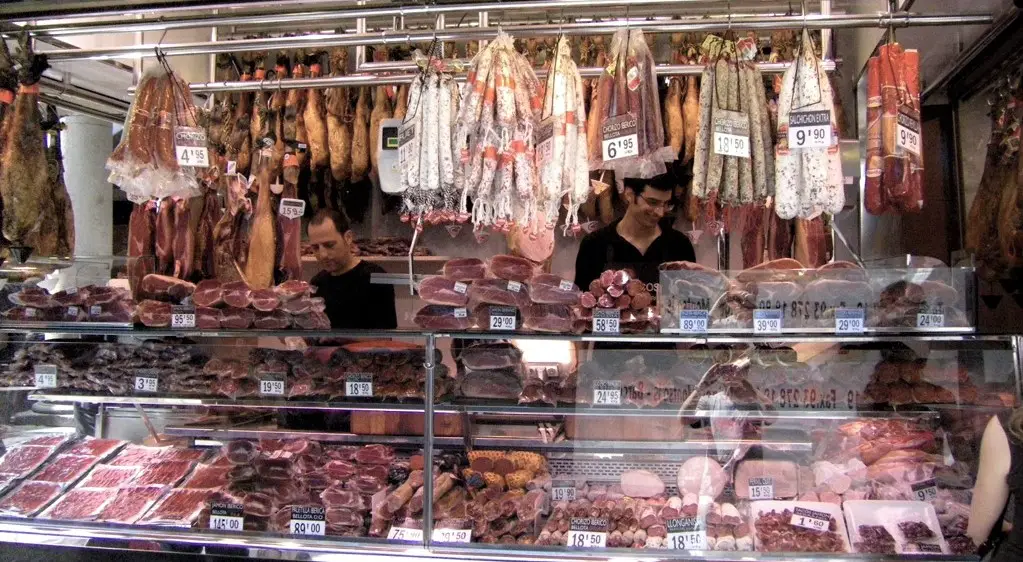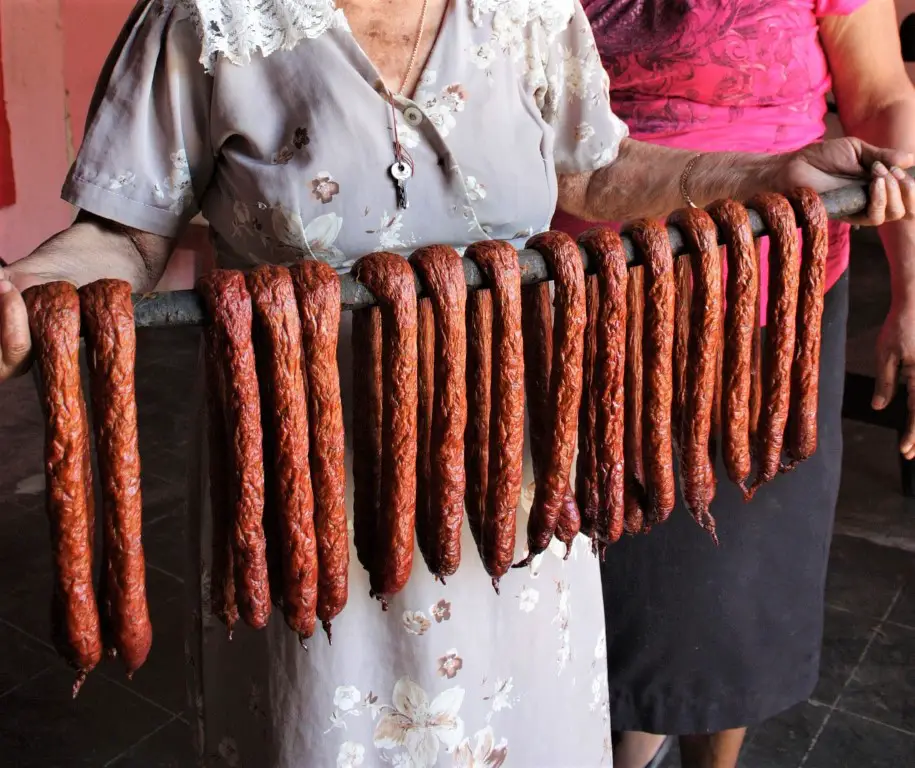Can’t decide between or differentiate chorizo vs. longaniza? Let’s compare them both. These are two spicy sausages, made primarily with pork and bacon. Both belong to Spanish Cuisine, but the tastes are different. Chorizo tastes more like smoked paprika, while longaniza tastes more like black pepper and other spices.
Spanish chorizo tastes different from a Spanish longaniza, and it also tastes different from Mexican chorizo. Why? The spices make all the difference.
Even though the concept is the same (i.e., flavored sausage), chorizos and longanizas adapt to different cuisines.
There are some unique characteristics that identify one as longaniza and another as chorizo. Can’t decide between chorizo and longaniza? Keep reading to learn how to identify these tasty sausages.
What is Chorizo?

Spanish chorizo is a ready-to-eat short spicy sausage with a smoky flavor. It is essentially ground pork and its fats, seasoned with pimentón (Spanish smoked paprika) and other spices. Producers stuff the mixture in an intestine casing. This creates a cylindrical shape.
Pimentón gives the Spanish chorizo its smoky flavor and a red color. It’s the primary spice in chorizos, but you can include other spices like garlic, pepper, chilies, etc.
Chorizo originated from the Iberian Peninsula (in southern Europe). It began as a pork sausage, but now we have beef, turkey, chicken, venison, and even soy chorizo.
How is Chorizo Made?
The ingredients used in chorizo depend on the region’s cuisine.
The main ingredients are:
- Pork
- Smoked paprika
- Garlic
- Salt
The Spanish chorizo goes through an extra step; dry-curing. After preparing and seasoning the meat, producers salt and hang it at room temperature to ferment. Mass producers usually hang the chorizos up to 30 days before selling. It dries and “cooks” the sausage. This is why cured chorizos have white mold on the casing.
While some producers make only one type of flavor, others let you choose between spicy chorizo (Picante) and sweet chorizo (Dulce). Mexicans have green chorizo called chorizo Verde. They use tomatillo to make the sausage green.
Cooking With Chorizo
Chorizo casing is edible. You don’t need to remove it. But when you want to cook your chorizo in crumbles, you will remove the casing. You slice open the sausage and squeeze out the meat.
Enjoy your chorizo in meatballs, scrambled eggs, burritos, or stuffed chicken.
What is Longaniza?
A Spanish longaniza is similar to the Spanish chorizo. Except it is longer and uses black pepper as the primary seasoning. But it can have more spices, including paprika, garlic, salt, achiote, anise seeds, nutmeg, cinnamon, etc.
Unlike chorizo, longaniza is minced meat, not ground, and fats stuffed in an intestine casing. Some producers instead wrap it with plastic paper or wax paper.
Like chorizo, longaniza began as a flavored pork sausage, but it evolved to include beef, chicken, turkey, and tuna over the years. It is generally spicier than chorizo.
Longaniza originated from Spain. Like chorizos, there are many variations of longaniza depending on the respective region. Some of the most common longanizas include:
- Filipino longganisa
- Dominican longaniza
- Mexican and Spanish longaniza.
How is Longaniza Made?
The main ingredients:
- Pork (or any other meat).
- Black pepper (or chilies).
- Garlic
- Salt
Most producers sell fresh longaniza. Though some producers also sell cured longaniza. When buying your longaniza, read the label to ensure you buy the right type.
Cooking With Longaniza
Cured longaniza needs no cooking. You slice and eat in a sandwich.
You can boil, grill, fry, or cook your fresh longaniza with some other dish like rice. If the casing is wax or plastic, you need to remove it.
Chorizo Vs Longaniza: The Main Differences.
There are three main differences between chorizo and longaniza:
- Taste and color.
- Texture
- Presentation
Taste And Color
Each type of chorizo and longaniza tastes differently because the spices and herbs determine the taste and color.
You can expect typical chorizo to have a strong paprika flavor and color. A Spanish longaniza would taste like black pepper or chilies.
Texture
Chorizo is ground meat, while longaniza is minced meat. Ground meat is very fine compared to minced meat.
Presentation
Chorizo is often a short thick sausage, while a longaniza is a long thin sausage. When making a longaniza, producers stuff the whole intestine. But when making the chorizo, they break the intestines into shorter sausages.
However, you cannot rely on size alone to distinguish these two sausages. That’s because some producers make long chorizos that you could mistake for short longanizas.
Another key difference is, chorizos always come in a natural sausage casing while longanizas may come wrapped in plastic.
Are Chorizo or Longaniza Healthy?
They both have healthy proteins and vitamins. But it also has high fats and sodium. So if you don’t like the fats, go for lean ground meats.
Chorizo Vs Longaniza – Which Is Better?
Chorizo is considered more versatile. Though you can use them interchangeably for a taco or burrito, some recipes demand that you get the right sausage.
For example, if you are making queso fundido, you would use chorizo.
Wrapping Up
There is no standard description for a longaniza or chorizo. The variations are too many. The easiest way to spot a longaniza is the exaggerated length and thinness. The key differences between these two sausages are the flavor, texture, size, and casing type.
Chorizos use paprika, ground meat, and edible casings. Conversely, longanizas use black pepper or chilies, minced meat, and sometimes plastic wrappings.
But you might find chorizo that tastes like a spicier longaniza. The chef determines how the sausage looks and tastes. The best thing to do is read the ingredients whenever you shop for your chorizo or longaniza. The ingredients will clear up any concerns.


